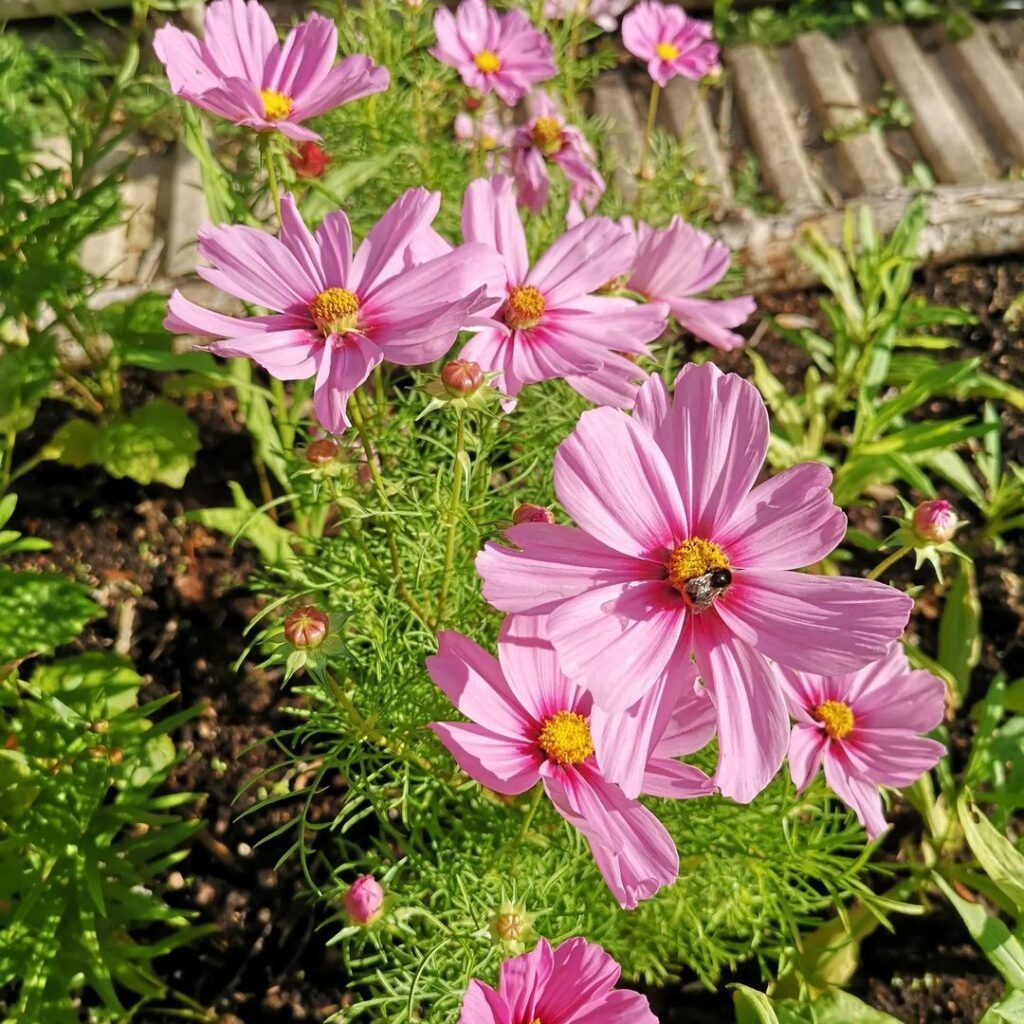Discover the joy of cultivating cosmos, a vibrant and easy-to-grow annual that adds a pop of color to any garden. This step-by-step guide covers everything from sowing seeds to caring for these beautiful bloomers, ensuring a successful and rewarding gardening experience.

Cosmos, a genus of annual flowering plants native to Mexico and the southwestern United States, has become a beloved addition to gardens worldwide. These cheerful bloomers boast an array of colors, including shades of pink, white, yellow, and orange, and their lacy foliage adds a delicate touch to any garden setting. Not only are cosmos visually stunning, but they’re also incredibly easy to grow, making them an ideal choice for both seasoned gardeners and beginners alike. In this comprehensive guide, we’ll walk you through the process of sowing, growing, and caring for these delightful flowers in eight simple steps.
Here’s the information for Chinese Evergreen:
| Aspect | Information |
|---|---|
| Botanical Name | Aglaonema |
| Plant Type | Perennial, Houseplant |
| Zones | 10-12 (typically grown indoors) |
| Exposure | Low to Bright, Indirect Light (tolerates low light) |
| Bloom Time | Inconspicuous blooms, primarily grown for foliage |
| Height/Spread | Typically 1-3 feet tall, spreading 1-3 feet wide |
Step 1: Choosing the Right Cosmos Variety
Before you begin your cosmos-growing journey, it’s essential to select the perfect variety for your garden. Here are some popular options to consider:
1. Cosmos bipinnatus

Also known as the garden cosmos, this classic variety features daisy-like blooms in shades of pink, white, and crimson. It grows up to 4 feet tall and is perfect for borders or cutting gardens.
2. Cosmos sulphureus

The yellow cosmos, as its name suggests, produces vibrant yellow flowers and can reach heights of 2 to 3 feet.
Cosmos bipinnatus ‘Sonata Series’: This dwarf variety grows to about 1 foot tall and comes in a range of colors, making it ideal for containers or the front of garden beds.
3. Cosmos bipinnatus (Rubenza)

For a touch of drama, consider this variety with its deep red, almost maroon-colored blooms.
Step 2: Preparing the Planting Site
Cosmos thrive in well-drained, nutrient-rich soil and full sun exposure. Follow these steps to prepare the perfect planting site:

- Choose a sunny location that receives at least 6 hours of direct sunlight per day.
- Amend the soil with compost or well-rotted manure to improve drainage and provide essential nutrients.
- Loosen the soil to a depth of 6 to 8 inches, breaking up any clumps or compacted areas.
Step 3: Sowing the Seeds
Cosmos can be sown directly in the garden or started indoors, depending on your climate and personal preference. Here’s how to do it:
Direct Sowing
- After the last frost date in your area, sow the seeds 1/4 to 1/2 inch deep and 6 to 12 inches apart.
- Water the soil gently but thoroughly to ensure good seed-to-soil contact.
- Keep the soil consistently moist until the seeds germinate, which usually takes 7 to 14 days.
Indoor Sowing
- Start seeds indoors 4 to 6 weeks before the last expected frost date.
- Fill seed trays or containers with a well-draining seed-starting mix.
- Sow the seeds 1/4 inch deep and keep the soil moist until germination occurs.
- Once the seedlings develop their first set of true leaves, transplant them into larger containers or directly into the prepared garden bed.
Step 4: Thinning and Spacing
As the cosmos seedlings emerge and grow, it’s important to thin them out to prevent overcrowding and promote healthy growth. Here’s how:
- When the seedlings are 2 to 3 inches tall, thin them out to a spacing of 12 to 18 inches apart.
- Snip off the extras at soil level with scissors, being careful not to disturb the remaining plants.
- If you’ve sown the seeds directly in the garden, thin the seedlings to the recommended spacing once they’ve developed their first set of true leaves.
Step 5: Watering and Fertilizing
Proper watering and fertilization are essential for ensuring your cosmos plants thrive and produce an abundance of blooms. Follow these tips:
- Watering: Cosmos prefer consistently moist, well-drained soil. Water the plants deeply, aiming for about 1 inch of water per week, adjusting as needed based on weather conditions.
- Fertilizing: Feed your cosmos plants with a balanced, water-soluble fertilizer every 4 to 6 weeks during the growing season. Avoid over-fertilizing, as this can lead to excessive foliage growth at the expense of blooms.
Step 6: Deadheading and Pruning
Deadheading, or removing spent blooms, and pruning are crucial steps to encourage continuous flowering and maintain a tidy appearance. Here’s how to do it:
- Deadheading: Regularly remove faded or wilted flowers by pinching them off with your fingers or using pruners. This will prevent the plants from going to seed and promote more blooms.
- Pruning: To keep your cosmos plants compact and encourage bushier growth, pinch off the growing tips when the plants are about 6 to 8 inches tall. This will encourage branching and more flower production.
Step 7: Supporting Tall Varieties
Some cosmos varieties can grow quite tall, reaching heights of 4 feet or more. To prevent them from toppling over or becoming leggy, it’s a good idea to provide support:
- Use sturdy stakes or tomato cages to support the plants as they grow taller.
- Gently tie the stems to the support structure using soft plant ties or twine, being careful not to damage the stems.
Step 8: Enjoying and Harvesting the Blooms
Once your cosmos plants begin to flower, it’s time to sit back and enjoy their beauty! However, don’t forget to take advantage of these stunning blooms:
- Cut Flowers: Cosmos make excellent cut flowers and can last up to 10 days in a vase. Cut the stems in the morning and immediately place them in water.
- Dried Flowers: Cosmos blooms can also be dried for use in arrangements or crafts. Simply hang the stems upside down in a cool, dark place until fully dried.
- Self-Seeding: If you’d like your cosmos to reseed themselves for the following year, allow some of the spent blooms to go to seed. The seeds will scatter and potentially germinate the next growing season.
Cosmos are a true delight for any garden, offering a vibrant and long-lasting display of color with minimal effort. By following these eight simple steps, you’ll be well on your way to cultivating a stunning cosmos garden that will brighten up your outdoor space and bring you joy throughout the growing season. Whether you’re a seasoned gardener or a beginner, cosmos are a rewarding and easy-to-grow addition that will undoubtedly become a cherished part of your gardening journey.
Pingback: Bottlebrush Plants : The Ultimate Guide to Growing Gorgeous